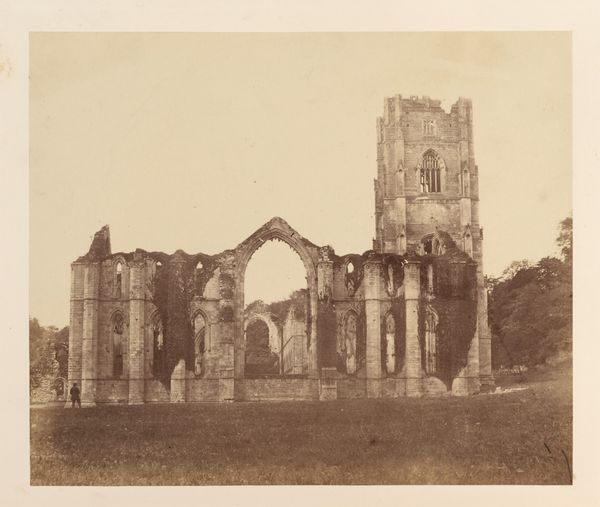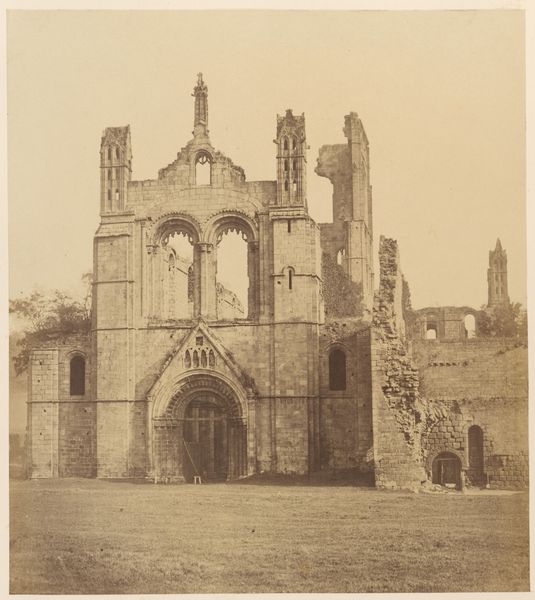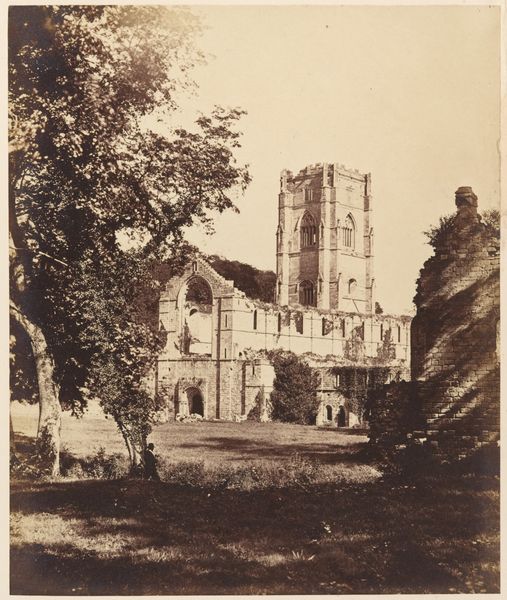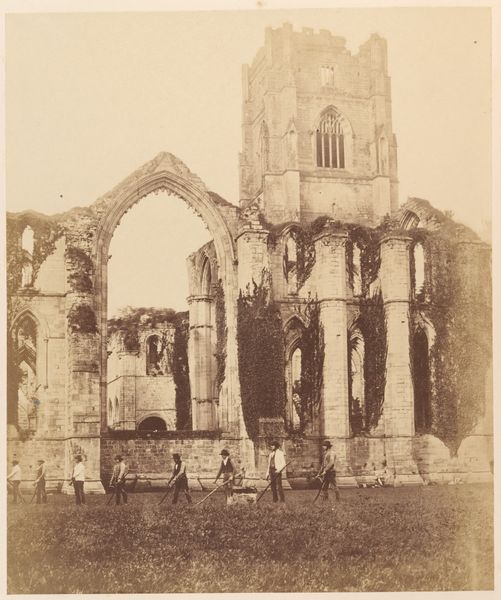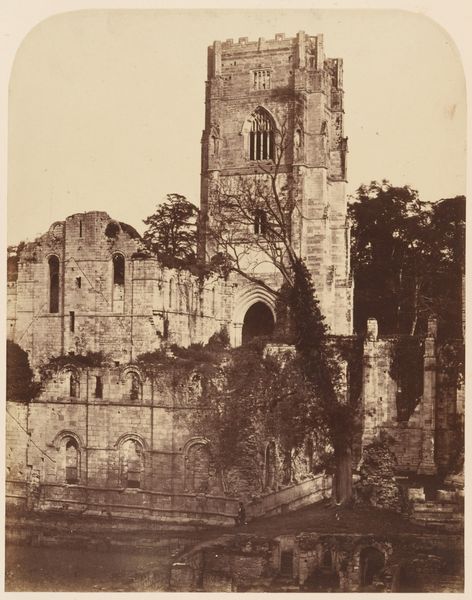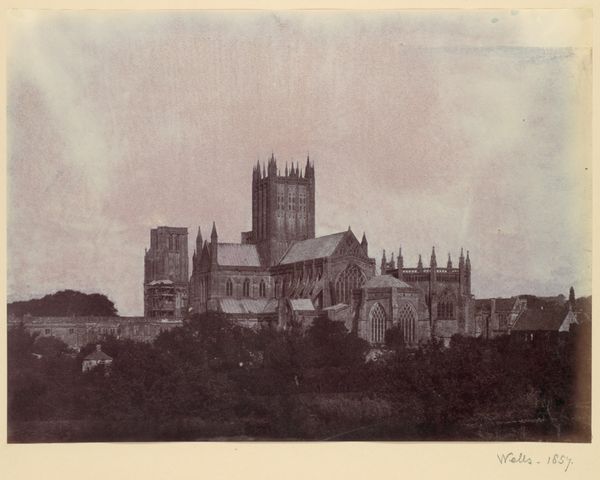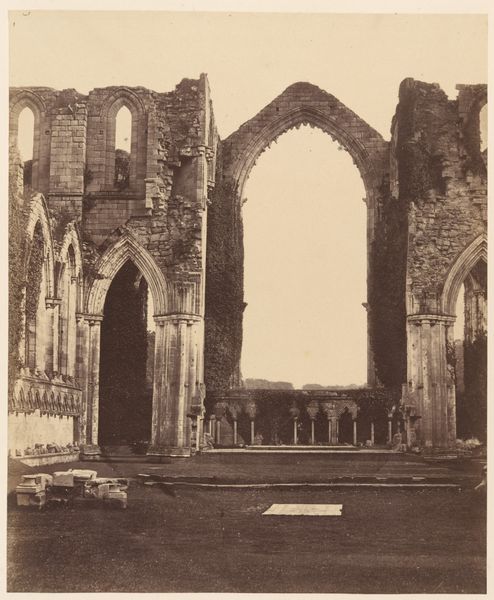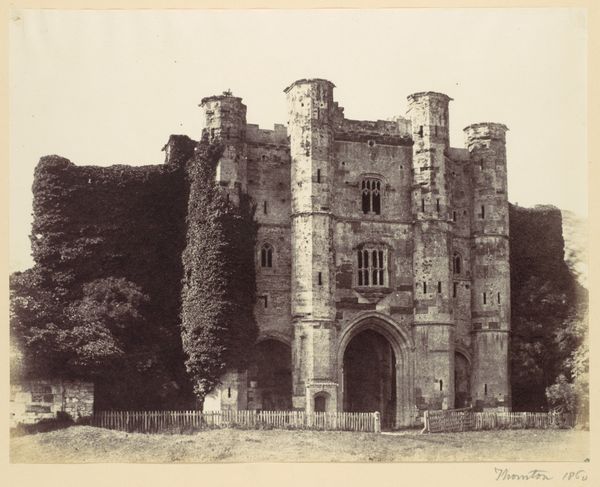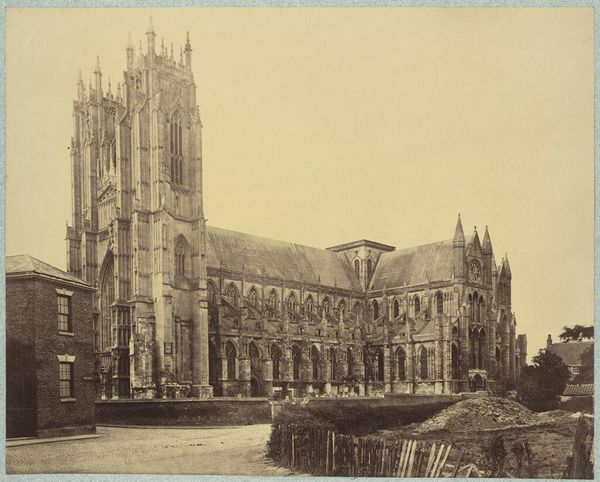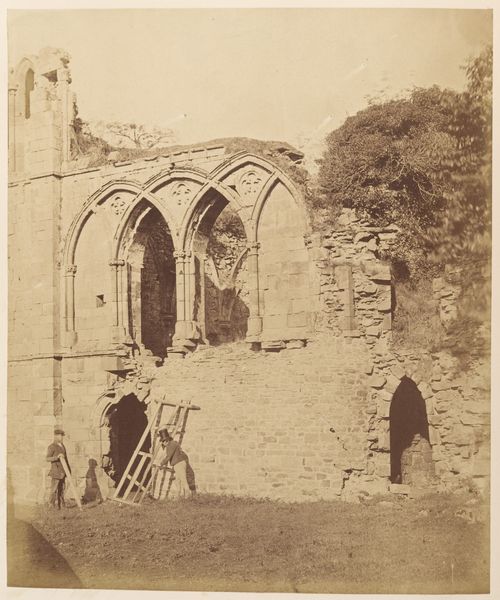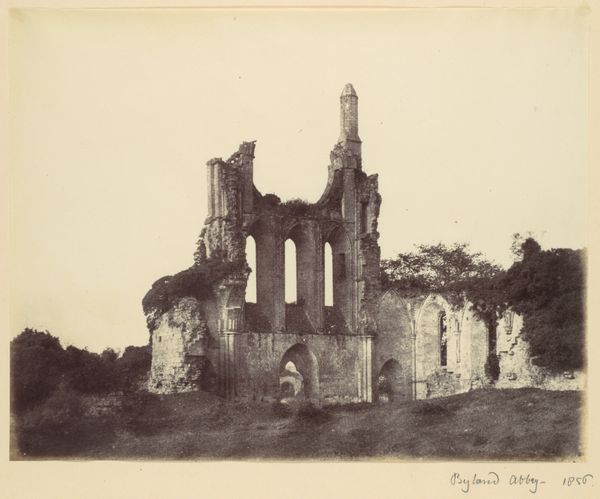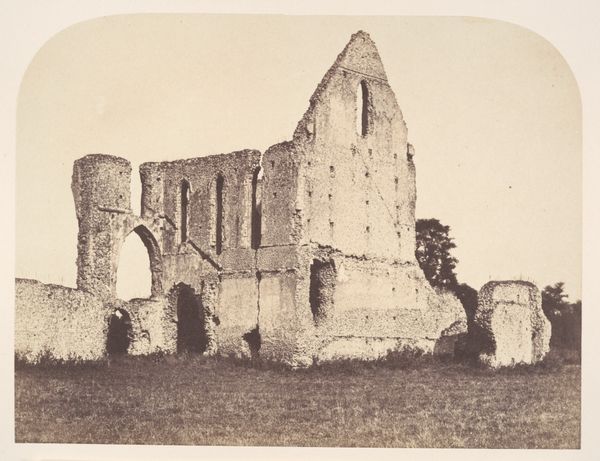
photography, gelatin-silver-print, architecture
#
landscape
#
photography
#
historical photography
#
arch
#
gelatin-silver-print
#
19th century
#
architecture
Dimensions: Image: 22.5 x 27.9 cm (8 7/8 x 11 in.) Mount: 43.9 x 30 cm (17 5/16 x 11 13/16 in.)
Copyright: Public Domain
Curator: What strikes me first about this gelatin-silver print, "Fountains Abbey. General Western Front," from the 1850s, is its somber stillness. The monochromatic palette really emphasizes the decay. What's your take, Editor? Editor: It does evoke a certain melancholic aura. This piece by Joseph Cundall transports me to considerations about time and power. How would you contextualize the ruins of Fountains Abbey within Victorian society’s romanticization of ruins and its impact on our modern sensibilities? Curator: Well, socially, the Victorian era experienced the Industrial Revolution that fostered significant shifts in religion. Art started reflecting spiritual and emotional exploration. The abbey itself, once a site of intense religious practice and power, is now rendered as fragments within an image consumed by people dealing with modernity and religious disruption. Editor: Exactly! So the political underpinnings can’t be ignored here, can they? The English Reformation’s disestablishment of monasteries casts a long shadow on pieces like this one. What happens when we look at an image divorced from its material, sacred, religious beginnings? I would ask. We look at ruins that once defined people, but how do ruins also then define their absence? Curator: Precisely. This photograph becomes a complex meditation on authority, faith, and history—the dissolution of those institutions echoing in these architectural absences. Furthermore, the Victorian sensibility of documenting historical structures, as if capturing relics from another age, intersects with developing social issues and burgeoning theories of British identity. Editor: I agree that this resonates today. It becomes more than a historical record; it embodies dialogue concerning gender and class too, especially regarding agency, labor, and cultural value. Looking through a contemporary feminist perspective, who gets to decide what constitutes an artistic subject and to determine whether preservation or desecration triumphs? Curator: That’s the tension at play, isn’t it? The Abbey transforms into a place in which societal ideals can be explored with photography now being utilized as a medium that democratizes information. Joseph Cundall created a work not merely reflecting a time or architectural subject but one inviting continuous reassessment of narratives that continue evolving across time. Editor: Well said. Ultimately, what persists in Joseph Cundall's composition of “Fountains Abbey. General Western Front" are our reflective gazes as contemporary observers questioning our participation in the intricate tapestry of existence and experience that remains woven and represented by ruins like this.
Comments
No comments
Be the first to comment and join the conversation on the ultimate creative platform.
